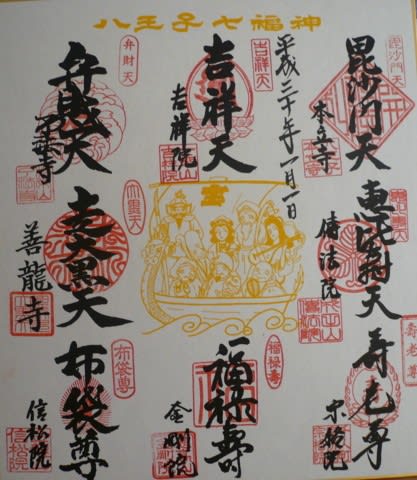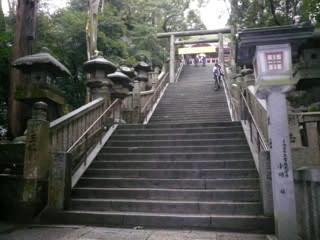It is said that Japanese people has believed in native Shintoism and foreign Buddhism together since Buddhism was introduced to Japan in the 6th century. The two religions had been unified in Japan until the government of the Meiji era enforced the law of the separation of Shintoism and Buddhism in the middle of the 19th century.
When it comes to the subject about the mixture between Shintoism and Buddhism, I remember "Shichifukujin (七福神)", or the seven gods of good luck.

(Above: The seven gods in a treasure ship. Such a picture is very popular.)
But here, exceptionally,there are eight gods relate to the name of the city,"Hachioji" (Hachi means eight)
Although they are called gods, they consist of gods and holy persons of Buddhism, Shintoism, Taoism and Hinduism. And each of them is the object of woship in temples as well as in shirines.
So when I pray, I sometimes hesitate between two manners of worship, Shinto style and Buddhism style.
They are the gods who bring us various luck such as a long life, wisdom, prosperity in business, family well-being, etc. It is said that they became widely known in the Muromachi period (the 14th century-16th century).
And even now the seven lucky gods tour of New Year is very popular. I love it because much fortune can be obtained at a time. Moreover, since you have to walk along a fair distance to visit seven temples or shirines, it is good for health, too.



































